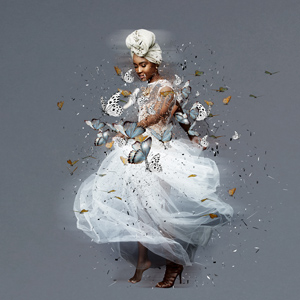Jose Feliciano is an amazing story teller. He uses both his words and music during concerts in a way that keeps thousands of people engaged. What’s most amazing is that his story is felt even when listening to his recorded music. Here’s Feliciano’s inspiration, story, and come from when playing the national anthem for the 1968 World Series:
“I had set out to sing an anthem of gratitude to a country that had given me a chance; that had allowed me, a blind kid from Puerto Rico — a kid with a dream — to reach far above my own limitations. I wanted to sing an anthem of praise to a country that had given my family and me a better life than we had had before.”
Feliciano’s performance of the National Anthem was so altered from the traditional that it created controversy. But despite the controversy, his story resounded. And that story has led to decades of reinterpretations of the national anthem — and has allowed audiences to be open to the music in a new way.
On that controversy, Feliciano writes:
“The controversy shadowed me for many years, but I’m thankful I had the opportunity to perform our Anthem in a way that was intensely personal to me, yet still maintained the impact and meaning of our nation’s song. I am also thankful to see that today it is common to hear our National Anthem performed in a stylized fashion and that it is now acceptable, indeed admirable, for a musician to deliver a personal interpretation of our National Anthem.”
Feliciano’s story is about transcendence. It affirms the idea that we can all be more… to the world, to our families, and to ourselves. And people LOVE that story! If Feliciano had not tapped into his own feelings of appreciation and then shared them, his performance in 1968 would be long forgotten. And we would all be poorer for it.
“But that’s Jose Feliciano,” you might be saying. “I’m not that interesting! I don’t have a story!”
All musicians have a story. All humans have a story. But for most of us it takes some digging to find it.
And honestly, you’re not going to love this process.
Because your most powerful stories show your challenges, they expose how you came to this place. Finding those stories involves peeling back the layers of the onion and sharing what you have overcome; how you have transcended to get to this place. That can be hard to do. It can also be really worth it.
It’s worth it because in order to overcome those barriers, you had to have a purpose, a vision, a reason to overcome. Of course, music is your mission, but you have to go deeper: what core passion fires your drive to make music?
I heard a young singer tell the story of singing at a children’s hospital. Many of the children came in weary or in obvious pain, but by the time she was two songs in, the light was back in their eyes. For a moment, for that moment that she was singing, those kids were able to forget their pain. That was the moment she knew she wanted to be a musician.
That was the moment she found her mission.
So, dig for your version of that story. And as you’re digging, remember: story applies to everything. Your T-shirts will sell better if people know the meaning behind the logo. Your albums will sell better if people know the stories behind the songs. You will sell better if people know the story behind you.
Your story is the engine that drives you: It is basically your mission and vision statement.
So this week, think through your story: Why did you got into music? How did you get to the place you are now? What is at the root of getting up on that stage?
Answer these questions:
-
- What about music brings you the most joy?
-
- What is the most meaningful reaction you’ve ever gotten from a listener?
-
- If you could use your music to bring about change what would that change be?
-
- What central wisdom do you try to live your life by?
-
- Where has making music required you to be vulnerable?
- Conquest, pain, defiance, joy, freedom – what words are core to your story?
Take time with this. Dig as deeply as you can. And once again, ask other people for their insight.
Next week: So, I’ve Got a Story. Now What?



